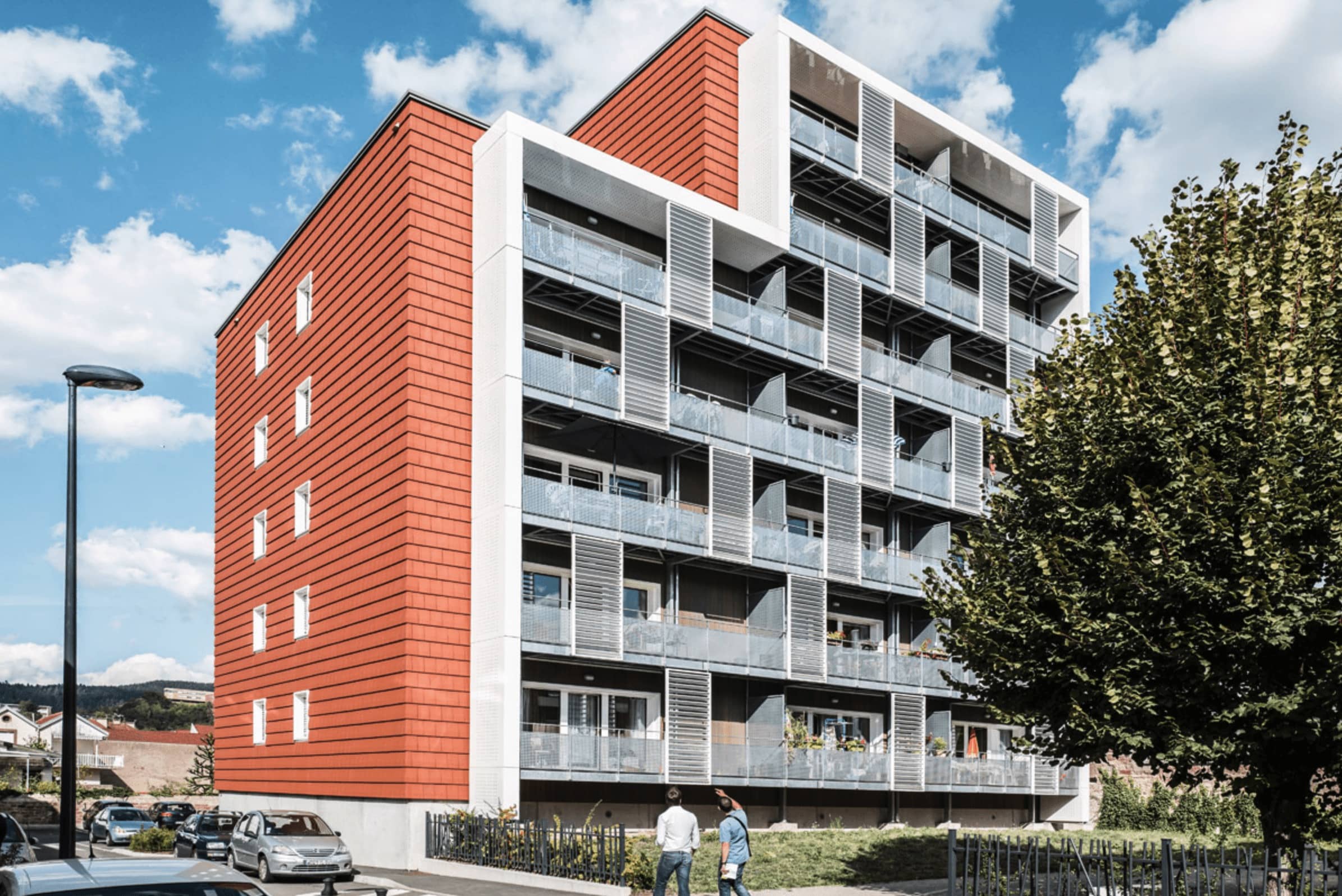
www.buildingsandcities.org/insights/commentaries/cop26-biobased-materials.html
Fast-Growing Bio-Based Materials Can Heal the World

By Guillaume Habert (ETH Zurich, CH)
The construction industry faces many pressures including: to deliver both rapid urbanization and a steep decarbonization of the materials that it uses. Radical reductions in GHG emissions are needed by 2030, so the construction industry must drastically reduce its operational and embodied emissions within a short time frame. It is imperative to start implementing realistic solutions straightaway. Fast growing bio-based agricultural materials can store carbon in less than a decade and provide a realistic solution for building materials. Positive change can be created quickly by creating both supply push (agriculture) and demand pull (public procurement and regulatory demand).
The built environment accounts for 40% of the annual anthropogenic GHG emissions. Half of these emissions are for building
operation and the other half is linked with building construction. Sadly, the
embodied emissions associated with construction activities have not
fundamentally changed over the last 50 years, although great progress has been
achieved with lowering operational emissions (Röck et al., 2020).
To solve this challenge, the most prominent options in the construction sector are a switch to timber construction or to use carbon capture and storage (CCS) for zero-carbon cement production. However, forestry cannot keep pace with construction demand. Scientists are already raising the alarm on the intensive use of forests (Ceccherini et al., 2020; Raven et al., 2021). The use of timber in construction is merely just a transfer of carbon from one stock, the forest, to another, the buildings. It has no influence on the atmosphere, unless new trees are grown (which takes decades). The use of CCS to deliver a carbon neutral cement is only at pilot stage, but the feasibility of a massive scale up is unknown. Even with the assumption that it is possible, it will take years to roll out due to the sunk costs and payback periods for existing plant. There are further risks that implementation is problematic, due to lack of investment, high cost, logistics questions on CO2 transport or acceptance by the local population.
Fast-growing bio-based plants can store carbon in less than a decade
A sound solution is to use very fast growing plants: bamboo, straw, hemp, flax, etc. These are well-adapted to the construction needs. In the Global South, where structural materials are urgently needed, bamboo is available and widely used. Beautiful buildings are already built with it (see TERRAFIBRA Award). Bamboo can be industrialized and then used exactly as timber. Bamboo's great advantage is its growth rate is 5 to 7 years compared to 30 - 60 years for tropical trees.
In Global North, where insulation materials are crucial, straw is available. Buildings with prefabricated strawbale façades are already built (see TERRAFIBRA Award). There is more than enough existing supply of straw to that is ready to be used on all new and renovated buildings in Europe without land competition (Göswein et al., 2021). Furthermore, in addition to storing carbon much faster than trees and therefore healing the atmosphere, straw also regulates indoor comfort without technical systems increasing the resilience of such buildings.
Actions needed in the value chain
In order to mainstream the use of such fast growing bio-based materials, it is important to act on the many different levels of the long value chain linking material producer to the final building contractor.
Agricultural practice transformation: Fast growing bio-based are typically by-products from agriculture practices. What is currently missing is the link between the agricultural and construction businesses. Incentives are needed to motivate farmers to structure their production and orient their by-products towards construction. Careful attention is needed to avoid food competition. Straw is by-product of wheat and bamboo usually grow in non-arable land.
Train construction practitioners: The involvement of the middle actors is crucial for the implementation of new materials (Simpson et al., 2020). To mainstream new knowledge, the involvement of the main construction associations is needed. They need to act and offer such training although they might not be funded by the usual sponsors of such association. Their involvement will provide the required Quality label and credibility for using such materials. A similar approach is needed from the universities. As long as top ranked universities are not teaching engineers and architects about using such materials, they will lack credibility.
Mandate fast growing bio-based materials in construction projects: Top-down constraints are also required. Laws and local regulations can specify the minimum amount of fast-growing biobased materials in building projects. These constraints should not be seen as difficult to achieve but rather as a clear sign of national governments and local political actors that credible solutions exist to create buildings with low levels of embodied carbon.
Public procurement to stimulate demand: Governments are construction clients and can use their procurement process to create demand for fast-growing bio-based products in buildings and infrastructure. This can help to create and sustain a local supply chain that can deliver such materials. This assurance of demand acts as a catalyst for supply chain organisations, spurs investment and helps to lower costs.
In conclusion, the materials are there, in abundance. The technology is ready, tested and implemented in a multitude of buildings. What is lacking is a structured value chain. Positive change can be created quickly by creating both supply push (agriculture) and demand pull (public procurement and regulatory demand). Middle actors will need training provided by established construction associations or the vocational / professional education sector.
References
Cabernard, L., Pfister, S. & Hellweg, S. (2019). A new method for analyzing sustainability performance of global supply chains and its application to material resources. Science of the Total Environment, 684, 164-177. https://doi.org/10.1016/j.scitotenv.2019.04.434
Ceccherini, G., Duveiller, G., Grassi, G., Lemoine, G., Avitabile, V., Pilli, R. & Cescatti, A. (2020). Abrupt increase in harvested forest area over Europe after 2015. Nature, 583, 72-77. https://doi.org/10.1038/s41586-020-2438-y
Göswein, V., Reichmann, J., Habert, G. & Pittau, F., (2021). Land availability in Europe for a radical shift toward bio-based construction. Sustainable Cities and Society. 70, 102929. https://doi.org/10.1016/j.scs.2021.102929
Raven, P. et al. (2021). Letter regarding use of forests for bioenergy.
Röck, M., Saade, M.R.M.M.R.M., Balouktsi, M., Rasmussen, F.N.F.N., Birgisdottir, H., Frischknecht, R., Habert, G., Lützkendorf, T. & Passer, A. (2020). Embodied GHG emissions of buildings - the hidden challenge for effective climate change mitigation. Applied Energy, 258, 114107. https://doi.org/10.1016/j.apenergy.2019.114107
Simpson, K., Janda, K.B. & Owen, A. (2020). Preparing 'middle actors' to deliver zero-carbon building transitions. Buildings & Cities 1(1), 610-624. https://doi.org/10.5334/bc.53
Latest Peer-Reviewed Journal Content
A framework for 1.5°C-aligned GHG budgets in architecture
G Betti, I Spaar, D Bachmann, A Jerosch-Herold, E Kühner, R Yang, K Avhad & S Sinning
Net zero retrofit of the building stock [editorial]
D Godoy-Shimizu & P Steadman
Co-learning in living labs: nurturing civic agency and resilience
A Belfield
The importance of multi-roles and code-switching in living labs
H Noller & A Tarik
Researchers’ shifting roles in living labs for knowledge co-production
C-C Dobre & G Faldi
Increasing civic resilience in urban living labs: city authorities’ roles
E Alatalo, M Laine & M Kyrönviita
Co-curation as civic practice in community engagement
Z Li, M Sunikka-Blank, R Purohit & F Samuel
Preserving buildings: emission reductions from circular economy strategies in Austria
N Alaux, V Kulmer, J Vogel & A Passer
Urban living labs: relationality between institutions and local circularity
P Palo, M Adelfio, J Lundin & E Brandão
Living labs: epistemic modelling, temporariness and land value
J Clossick, T Khonsari & U Steven
Co-creating interventions to prevent mosquito-borne disease transmission in hospitals
O Sloan Wood, E Lupenza, D M Agnello, J B Knudsen, M Msellem, K L Schiøler & F Saleh
Circularity at the neighbourhood scale: co-creative living lab lessons
J Honsa, A Versele, T Van de Kerckhove & C Piccardo
Positive energy districts and energy communities: how living labs create value
E Malakhatka, O Shafqat, A Sandoff & L Thuvander
Built environment governance and professionalism: the end of laissez-faire (again)
S Foxell
Co-creating justice in housing energy transitions through energy living labs
D Ricci, C Leiwakabessy, S van Wieringen, P de Koning & T Konstantinou
HVAC characterisation of existing Canadian buildings for decarbonisation retrofit identification
J Adebisi & J J McArthur
Simulation and the building performance gap [editorial]
M Donn
Developing criteria for effective building-sector commitments in nationally determined contributions
P Graham, K McFarlane & M Taheri
Reimagining circularity: actions for optimising the use of existing buildings
R Lundgren, R Kyrö, S Toivonen & L Tähtinen
Effective interdisciplinary stakeholder engagement in net zero building design
S Vakeva-Baird, F Tahmasebi, JJ Williams & D Mumovic
Metrics for building component disassembly potential: a practical framework
H Järvelä, A Lehto, T Pirilä & M Kuittinen
The unfitness of dwellings: why spatial and conceptual boundaries matter
E Nisonen, D Milián Bernal & S Pelsmakers
Environmental variables and air quality: implications for planning and public health
H Itzhak-Ben-Shalom, T Saroglou, V Multanen, A Vanunu, A Karnieli, D Katoshevski, N Davidovitch & I A Meir
Exploring diverse drivers behind hybrid heating solutions
S Kilpeläinen, S Pelsmakers, R Castaño-Rosa & M-S Miettinen
Urban rooms and the expanded ecology of urban living labs
E Akbil & C Butterworth
Living with extreme heat: perceptions and experiences
L King & C Demski
A systemic decision-making model for energy retrofits
C Schünemann, M Dshemuchadse & S Scherbaum
Modelling site-specific outdoor temperature for buildings in urban environments
K Cebrat, J Narożny, M Baborska-Narożny & M Smektała
Understanding shading through home-use experience, measurement and modelling
M Baborska-Narożny, K Bandurski, & M Grudzińska
Building performance simulation for sensemaking in architectural pedagogy
M Bohm
Beyond the building: governance challenges in social housing retrofit
H Charles
Heat stress in social housing districts: tree cover–built form interaction
C Lopez-Ordoñez, E Garcia-Nevado, H Coch & M Morganti
An observational analysis of shade-related pedestrian activity
M Levenson, D Pearlmutter & O Aleksandrowicz
Learning to sail a building: a people-first approach to retrofit
B Bordass, R Pender, K Steele & A Graham
Market transformations: gas conversion as a blueprint for net zero retrofit
A Gillich
Resistance against zero-emission neighbourhood infrastructuring: key lessons from Norway
T Berker & R Woods
Megatrends and weak signals shaping future real estate
S Toivonen
A strategic niche management framework to scale deep energy retrofits
T H King & M Jemtrud
Generative AI: reconfiguring supervision and doctoral research
P Boyd & D Harding
Exploring interactions between shading and view using visual difference prediction
S Wasilewski & M Andersen
How urban green infrastructure contributes to carbon neutrality [briefing note]
R Hautamäki, L Kulmala, M Ariluoma & L Järvi
Implementing and operating net zero buildings in South Africa
R Terblanche, C May & J Steward
Quantifying inter-dwelling air exchanges during fan pressurisation tests
D Glew, F Thomas, D Miles-Shenton & J Parker
Western Asian and Northern African residential building stocks: archetype analysis
S Akin, A Eghbali, C Nwagwu & E Hertwich
Join Our Community

The most important part of any journal is our people – readers, authors, reviewers, editorial board members and editors. You are cordially invited to join our community by joining our mailing list. We send out occasional emails about the journal – calls for papers, special issues, events and more.
We will not share your email with third parties. Read more



Latest Commentaries
COP30 Report
Matti Kuittinen (Aalto University) reflects on his experience of attending the 2025 UN Conference of the Parties in Belém, Brazil. The roadmaps and commitments failed to deliver the objectives of the 2025 Paris Agreement. However, 2 countries - Japan and Senegal - announced they are creating roadmaps to decarbonise their buildings. An international group of government ministers put housing on the agenda - specifying the need for reduced carbon and energy use along with affordability, quality and climate resilience.
Building-Related Research: New Context, New Challenges
Raymond J. Cole (University of British Columbia) reflects on the key challenges raised in the 34 commissioned essays for Buildings & Cities 5th anniversary. Not only are key research issues identified, but the consequences of changing contexts for conducting research and tailoring its influence on society are highlighted as key areas of action.